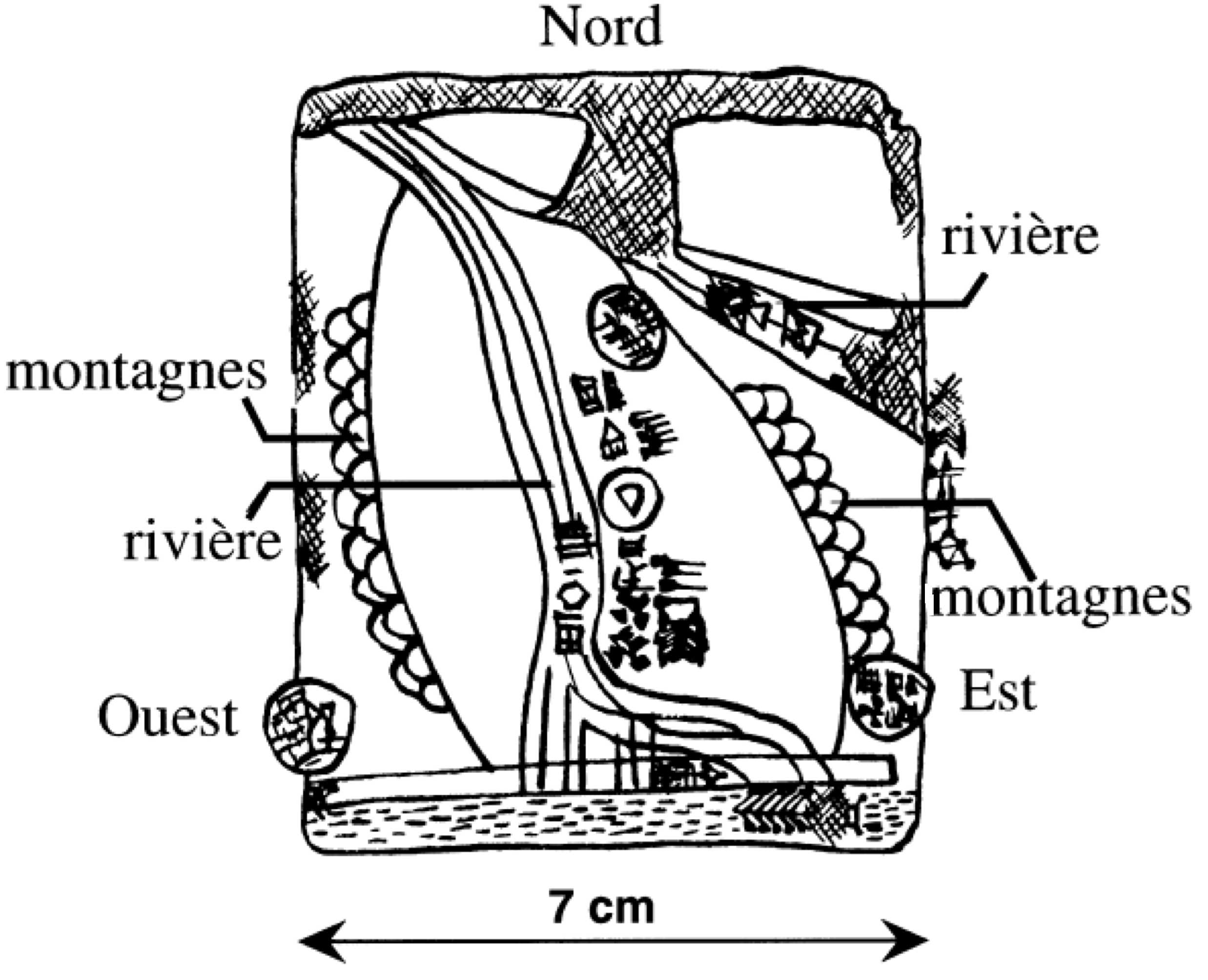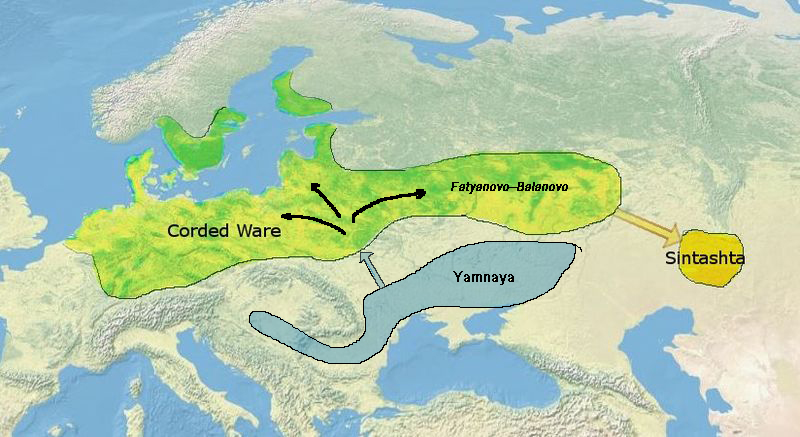|
Indo-Aryan Superstrate In Mitanni
The ancient Middle Eastern state of Mitanni (modern-day Northeast Syria, Southeastern Turkey, 2nd millennium BCE) used a dialect of Hurrian as its main language. This dialect however contains some loanwords of evidently Indo-Aryan origin, i.e. related to Sanskrit, the ancestor of many modern languages of the Indian subcontinent. The loaned vocabulary seems to be related to an elite group in Mitanni society, as they appear in the names of rulers and gods as well as in relation to horse-breeding and the military (thus forming a so-called superstrate). It is thus generally believed that Indo-Aryan peoples settled in Upper Mesopotamia and northern Syria, and established the kingdom of Mitanni following a period of political vacuum, while also adopting Hurrian. This is considered a part of the Indo-Aryan migrations. Linguistic context Professor Eva von Dassow concurs with the presence of Indo-Aryan terms in Mitanni vocabulary, but cautiously advises against the notion of an "Indo ... [...More Info...] [...Related Items...] OR: [Wikipedia] [Google] [Baidu] |
Indo-Iranian Languages
The Indo-Iranian languages (also known as Indo-Iranic languages or collectively the Aryan languages) constitute the largest branch of the Indo-European language family. They include over 300 languages, spoken by around 1.7 billion speakers worldwide, predominantly in South Asia, West Asia and parts of Central Asia. Indo-Iranian languages are divided into three major branches: Indo-Aryan, Iranian, and Nuristani languages. The Badeshi language remains unclassified within the Indo-Iranian branch. The largest Indo-Iranian language is the Hindustani language (Hindi-Urdu)."Hindi" L1: 322 million (2011 Indian census), including perhaps 150 million speakers of other languages that reported their language as "Hindi" on the census. L2: 274 million (2016, source unknown). Urdu L1: 67 million (2011 & 2017 censuses), L2: 102 million (1999 Pakistan, source unknown, and 2001 Indian census): ''Ethnologue'' 21. . . The areas with Indo-Iranian languages stretch from Europe ( Romani) and ... [...More Info...] [...Related Items...] OR: [Wikipedia] [Google] [Baidu] |
á¹ta
In the Historical Vedic religion, Vedic religion, ''á¹ta'' (International Phonetic Alphabet, /ɹ̩t̪É/; Sanskrit ' "order, rhythm, rule; truth; logos") is the principle of natural order which regulates and coordinates the operation of the universe and everything within it. In the hymns of the Vedas, ''á¹ta'' is described as that which is ultimately responsible for the proper functioning of the natural, moral and sacrificial orders. Conceptually, it is closely allied to the injunctions and ordinances thought to uphold it, collectively referred to as ''Dharma'', and the action of the individual in relation to those ordinances, referred to as ''Karma'' â two terms which eventually eclipsed ''á¹ta'' in importance as signifying natural, religious and moral order in later Hinduism. Sanskrit scholar Maurice Bloomfield referred to ''á¹ta'' as "one of the most important religious conceptions of the Rigveda", going on to note that, "from the point of view of the history of religiou ... [...More Info...] [...Related Items...] OR: [Wikipedia] [Google] [Baidu] |
Vishuva Sankranti
Maha Bishuba Sankranti (), also known as Pana Sankranti, (), is the traditional new year day festival of Odia people in Odisha, India. The festival occurs in the solar Odia calendar (the lunisolar Hindu calendar followed in Odisha) on the first day of the traditional solar month of Meá¹£a, hence equivalent lunar month Baisakha. This falls on the Purnimanta system of the Indian Hindu calendar. It therefore falls on 13/14 April every year on the Gregorian calendar. The festival is celebrated with visits to Shiva, Shakti or Hanuman temples. People take baths in rivers or major pilgrimage centers. Communities participate in (fairs), participate in traditional dance or acrobatic performances. Feasts and special drinks such as a chilled wood apple-milk-yoghurt-coconut drink called is shared, a tradition that partly is the source of this festival's name. Pana Sankranti is related to new year festivals in South and Southeast Asian solar New Year as observed by Hindus and Buddhist ... [...More Info...] [...Related Items...] OR: [Wikipedia] [Google] [Baidu] |
Solstice
A solstice is the time when the Sun reaches its most northerly or southerly sun path, excursion relative to the celestial equator on the celestial sphere. Two solstices occur annually, around 20â22 June and 20â22 December. In many countries, the seasons of the year are defined by reference to the solstices and the equinoxes. The term ''solstice'' can also be used in a broader sense, as the day when this occurs. For locations not too close to the equator or the poles, the dates with the longest and shortest periods of daylight are the summer and winter solstices, respectively. Terms with no ambiguity as to which hemisphere is the context are "June solstice" and "December solstice", referring to the months in which they take place every year. Etymology The word ''solstice'' is derived from the Latin () and (), because at the solstices, the Sun's declination appears to "stand still"; that is, the seasonal movement of the Sun's sun path, daily path (as seen from Earth) paus ... [...More Info...] [...Related Items...] OR: [Wikipedia] [Google] [Baidu] |
Nuzi
Nuzi (Hurrian Nuzi/Nuzu; Akkadian Gasur) at modern Yorghan Tepe (also Yorgan Tepa and Jorgan Tepe), Iraq was an ancient Mesopotamian city 12 kilometers southwest of the city of Arrapha (modern Kirkuk) and 70 kilometers southwest of SÄtu Qala, located near the Tigris river. It was occupied from the Ubaid period in the 5th millennium BC until late in the 2nd millennium BC then, after a period of abandonment, in the Parthian era. It reached major importance in the Akkadian Empire period when it was known as Gasur and again in the Mitanni period when its name was Nuzi. History The site has about 15 occupational layers with 12 major strata several of which have subdivisions. The majority of excavation work at the site was on the Late Bronze Age levels with only some soundings to the older strata. Traces of Parthian era occupation were found on the surface.Pfeiffer, Robert H., "The Excavations at Nuzi: Preliminary Report of the Fourth Campaign", Bulletin of the American Schools of ... [...More Info...] [...Related Items...] OR: [Wikipedia] [Google] [Baidu] |
Indo-Iranians
The Indo-Iranian peoples, also known as ÄÌrya or Aryans from their self-designation, were a group of Indo-European speaking peoples who brought the Indo-Iranian languages to parts of Europe, Central Asia, and South Asia in waves from the first part of the 2nd millennium BC onwards. They eventually branched out into the Iranian peoples and Indo-Aryan peoples. Nomenclature The term '' Aryan'' has long been used to denote the ''Indo-Iranians'', because ''ÄÌrya'' was the self-designation of the ancient speakers of the Indo-Iranian languages, specifically the Iranian and the Indo-Aryan peoples, collectively known as the Indo-Iranians. Despite this, some scholars use the term Indo-Iranian to refer to this group, though the term "Aryan" remains widely used by most scholars, such as Josef Wiesehofer, Will Durant, and Jaakko Häkkinen. Population geneticist Luigi Luca Cavalli-Sforza, in his 1994 book ''The History and Geography of Human Genes'', also uses the term Aryan to d ... [...More Info...] [...Related Items...] OR: [Wikipedia] [Google] [Baidu] |
Vedic Sanskrit
Vedic Sanskrit, also simply referred as the Vedic language, is the most ancient known precursor to Sanskrit, a language in the Indo-Aryan languages, Indo-Aryan subgroup of the Indo-European languages, Indo-European language family. It is attested in the Vedas and related literature compiled over the period of the mid-2nd millennium BCE, 2nd to mid-1st millennium BCE. It is oral tradition, orally preserved, predating the advent of writing by several centuries. Extensive ancient literature in the Vedic Sanskrit language has survived into the modern era, and this has been a major source of information for reconstructing Proto-Indo-European language, Proto-Indo-European and Proto-Indo-Iranian language, Proto-Indo-Iranian history. History Prehistoric derivation The separation of Proto-Indo-Iranian language into Proto-Iranian and Proto-Indo-Aryan language, Proto-Indo-Aryan is estimated, on linguistic grounds, to have occurred around or before 1800 BCE. The date of composition of t ... [...More Info...] [...Related Items...] OR: [Wikipedia] [Google] [Baidu] |
Kikkuli
Kikkuli was the Hurrian "master horse trainer 'assussanni''of the land of Mitanni" (LÃ''A-AÅ -Å U-UÅ -Å A-AN-NI Å A'' KUR URU''MI-IT-TA-AN-NI'') and author of a chariot horse training text written primarily in the Hittite language (as well as an Old Indo-Aryan language as seen in numerals and loan-words), dating to the Hittite New Kingdom (around 1400 BCE). The text is notable both for the information it provides about the development of Hittite, an Indo-European language, Hurrian, and for its content. The text was inscribed on cuneiform Cuneiform is a Logogram, logo-Syllabary, syllabic writing system that was used to write several languages of the Ancient Near East. The script was in active use from the early Bronze Age until the beginning of the Common Era. Cuneiform script ... tablets discovered during excavations of BoÄazkale and ḪattuÅ¡a in 1906 and 1907. Content and influence "Thus speaks Kikkuli, master horse trainer of the land of Mitanni" (''UM.MA Ki-ik ... [...More Info...] [...Related Items...] OR: [Wikipedia] [Google] [Baidu] |
Ashvins
The Ashvins (, ), also known as the Ashvini Kumaras and Asvinau,, §1.42. are Hindu deities, Hindu Divine twins, twin gods associated with medicine, health, healing, sciences, and the twilight. In the ''Rigveda'', they are described as youthful divine twin horsemen, travelling in a chariot drawn by horses that are never weary, and portrayed as guardian deities that safeguard and rescue people by aiding them in various situations. There are varying accounts, but Ashvins are generally mentioned as the sons of the sun god Surya and his wife Sanjna. In the epic ''Mahabharata,'' the Pandava twins Nakula and Sahadeva were the children of the Ashvins. Etymology and epithets The Sanskrit name ' (ठशà¥à¤µà¤¿à¤¨à¥) derives from the Proto-Indo-Iranian language, Indo-Iranian stem ''*HaÄwa-'' (cf. Avestan ''aspÄ''), itself from the Proto-Indo-European language, Indo-European word for the horse, ''*H1éḱwos'', from which also descends the Lithuanian name ''AÅ¡vieniai''.Alexander ... [...More Info...] [...Related Items...] OR: [Wikipedia] [Google] [Baidu] |
Nasatya
The Ashvins (, ), also known as the Ashvini Kumaras and Asvinau,, §1.42. are Hindu twin gods associated with medicine, health, healing, sciences, and the twilight. In the ''Rigveda'', they are described as youthful divine twin horsemen, travelling in a chariot drawn by horses that are never weary, and portrayed as guardian deities that safeguard and rescue people by aiding them in various situations. There are varying accounts, but Ashvins are generally mentioned as the sons of the sun god Surya and his wife Sanjna. In the epic ''Mahabharata,'' the Pandava twins Nakula and Sahadeva were the children of the Ashvins. Etymology and epithets The Sanskrit name ' (ठशà¥à¤µà¤¿à¤¨à¥) derives from the Indo-Iranian stem ''*HaÄwa-'' (cf. Avestan ''aspÄ''), itself from the Indo-European word for the horse, ''*H1éḱwos'', from which also descends the Lithuanian name ''AÅ¡vieniai''. Lubotsky, Alexander. "Indo-Aryan Inherited Lexicon". ''Indo-European Etymological Dictionary ... [...More Info...] [...Related Items...] OR: [Wikipedia] [Google] [Baidu] |
Indra
Indra (; ) is the Hindu god of weather, considered the king of the Deva (Hinduism), Devas and Svarga in Hinduism. He is associated with the sky, lightning, weather, thunder, storms, rains, river flows, and war. [3 volumes] Indra is the most frequently mentioned deity in the ''Rigveda''. He is celebrated for his powers based on his status as a god of order, and as the one who killed the great evil, an Asura (Hinduism), asura named Vritra, who obstructed human prosperity and happiness. Indra destroys Vritra and his "deceiving forces", and thereby brings rain and sunshine as the saviour of mankind. Indra's significance diminishes in the post-Vedic Indian literature, but he still plays an important role in various mythological events. He is depicted as a powerful hero. According to the ''Vishnu Purana'', Indra is the title borne by the king of the gods, which changes every Manvantara â a cyclic period of time in Hindu cosmology. Each Manvantara has its own Indra and the In ... [...More Info...] [...Related Items...] OR: [Wikipedia] [Google] [Baidu] |




